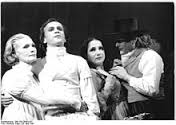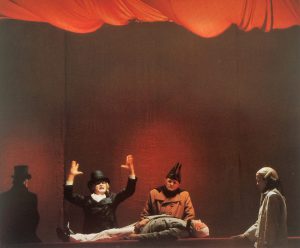International Women’s Day 2022 – thoughts for the day
International Women’s Day 2022
Today, it is International Women’s Day. In my first job, long ago, in a different world, that day gave reason for being provided with flowers and prosecco. The flowers we took home or decorate the office with, the prosecco we drank together with all the other female and male human beings around, that very afternoon. And that was common almost everywhere, flowers and coffee, and perhaps something alcoholic – sparkling wine or advocaat (egg liqueur).
Today, I think of all the brave women who try to rescue their children from war, from illness, from starvation, from fear. All the women who travelled and travel into a new world, foreign countries, hoping to give their children a better future. Many of them will struggle with the new language and requirements. Many of them will not be able to work or live in equal positions as those they left behind. Some of them will take on any kind of work – as cleaners, service, helping hands, to earn enough money for the family. In particular, those from Ukraine, who are leaving their husbands, partners, fathers, sons, and male friends, teachers, mentors, colleagues behind, right now. Yesterday, I heard a sociologist say that it will take the average Ukrainian female refugee about 6 to 8 years to regain a position and income as such they left behind. If.
International Women’s Day is a day to remember all those women who fought for equality, rights, and acceptance. Equality is not equal to ‘likeability,’ as Chimamanda Ngozi Adichie already emphasised. She wrote also “Teach her to love books;” “it is important to be able to fend for herself.”
Last Sunday, I went to an award-giving ceremony to honour Dr Hynda K Kleinman, who over 30 years served as the leader of the research laboratory at the US National Institute of Health. After she successfully fought to be allowed to do her PhD at MIT, she published throughout her career 440 scientific papers and obtains many patents for her scientific discoveries. In her speech, she described how she had to fight for her own rights, the rights for women in academia, and how she championed the rights and advancements of women in science. She presented a statistic saying that still only 20% of academics undertaking research are women and these only get smaller and fewer research budgets, as well as less relevant awards than male researchers. Very few, as Marie Curie, Nelly Sachs or Dorothy Crowfoot Hodgkin were awarded a Nobel Price, 58 women : 782 men.
The same is true for women in film and tv. Still, only a few women are trusted with directing although a few got great projects during the recent years. For example, 166 films by women were released accounting for 30% of all UK film releases this year. However, this figure was up just a single percentage point from 2020 (29%). (1) In the US, women are accounted for 17 % of directors working on the top 250 films, down from 18 % the year prior. In the top 100 films, the percentage of women directors also decreased from 16 % in 2020 to 12 % in 2021.
Women and Hollywood give this statistic: (2)
1) Women account for 50% of moviegoers. (MPA 2019)
2) On the top 100 grossing films of 2019, women represented:
- 10.7% of directors
- 19.4% of writers
- 24.3% of producers
- 70.4% of casting directors
3) On the top 250 grossing films of 2019, women comprised 6% of composers. This represents no change since 2019. (Center for the Study of Women in Television and Film)
4) Kathryn Bigelow and Chloé Zhao are the only women to ever win the Academy Award for Best Director. Only seven women have ever been nominated (Lina Wertmüller, Jane Campion, Sofia Coppola, Bigelow, Greta Gerwig, Zhao, and Emerald Fennell). Campion is the only woman to be nominated in the category more than once (in 1994 for “The Piano” and 2022 for “The Power of the Dog”).
5) In 2018 “Mudbound’s” Rachel Morrison became the first woman ever nominated for the Academy Award for Cinematography.
6) 43 of 2019’s top 100 films featured a female lead or co-lead. (Inclusion Initiative) (what but not always give the female character agency about the story, from a dramaturgical point of view. Kst)
7) 68% of all female characters were white in the top 100 films of 2019. 20% were Black, 7% were Asian, and 5% were Latina. (Center for the Study of Women in Television and Film)
8) On the top 500 films of 2019, movies with at least one female director employed greater percentages of women writers, editors, cinematographers, and composers than films with exclusively male directors. (Center for the Study of Women in Television and Film)
9) DIVERSITY SELLS:
- In 2018, films with casts that were 21-30% minority enjoyed the highest median global box office receipts. In 2019, this honor went to films with casts that were 41-50% minority.
- Films with casts that were 41-50% minority were released in the most international markets, on average, in both 2018 and 2019.
(UCLA)
10) During the 2019-2020 TV season:
- Women accounted for 30% of all creators, directors, writers, producers, executive producers, editors, and directors of photography working on broadcast network, cable, and streaming programs
- The number of women creators (28%) marked a historic high
- 94% of the programs considered had no women directors of photography, 76% had no women directors, 81% had no women editors, 73% had no women creators
- 20% of female characters were Black, 5% were Latina, and 8% were Asian
(Center for the Study of Women in Television and Film)
Thus, I would like to encourage all my fellow female colleagues and students to continue or intensify their active engagement in research and practice to get your voice heard. To get role models shown, to give an understanding of experiences of life from the female perspective, it needs to get stories told from our perspective. That approach is not only related to women working in the creative industry, but we are also telling stories priming the minds of audiences, about life and roles, gender, and power structures.
Let’s support, encourage, and recognise each other, together with the group of female members of staff, together as a group of male and female colleagues. Research allows an understanding and interpretation of relevant aspects of our world, and we need female voices heard as much as male voices. Therefore, dear academics, please make sure to use as many films directed by women as you can access, and make sure you use as many academic publications written by women as by the always preferred male authors. That would be already a great start, and feasible for everyone.
kerstin stutterheim, 8.3.2022
(1) https://www.southampton.ac.uk/news/2018/10/calling-the-shots-for-women-in-film.page
(2) https://womenandhollywood.com/resources/statistics/
(3) www.europarl.europa.eu%2FRegData%2Fetudes%2FBRIE%2F2019%2F633145%2FEPRS_BRI(2019)633145_EN.pdf&clen=1494198&chunk=true






